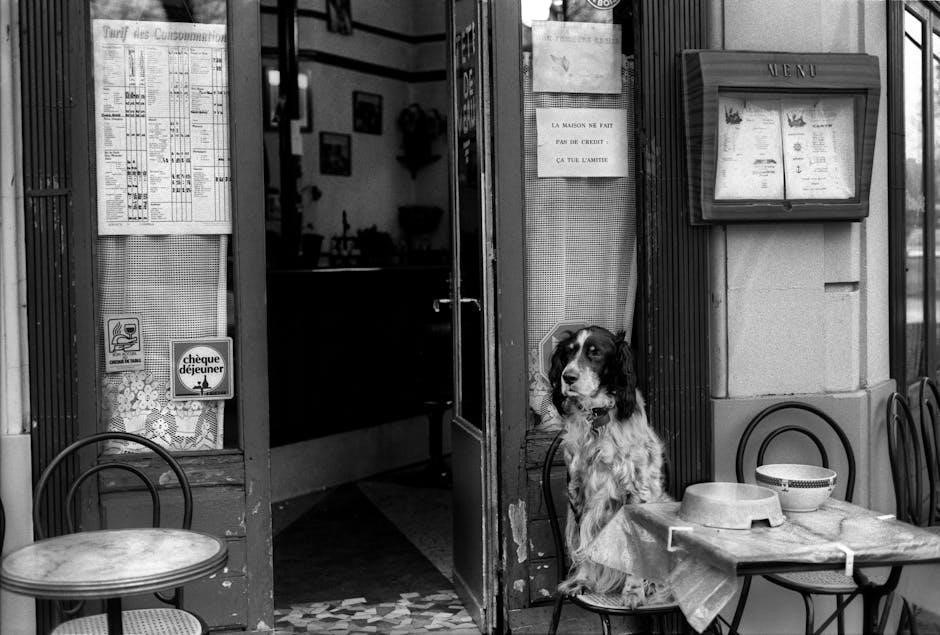Free Walker Bag Patterns⁚ A Comprehensive Guide
Discover numerous free walker bag PDF patterns online. These patterns offer various styles and sizes, perfect for beginners and experienced sewers alike. Easily customize them to suit individual needs and create practical, personalized walker bags.
Finding Free PDF Patterns Online
The internet is a treasure trove of free walker bag PDF patterns. A simple online search using keywords like “free walker bag pattern PDF,” “free wheelchair bag pattern,” or “DIY walker caddy pattern” will yield numerous results. Explore various websites offering sewing patterns, crafting blogs, and online communities dedicated to sewing and DIY projects. Many websites provide detailed instructions and diagrams alongside their downloadable PDF patterns. Remember to carefully review the pattern’s details before downloading to ensure it aligns with your skill level and desired features. Some websites may require registration or subscription for access to their pattern library, but many offer free patterns as a way to attract users and showcase their work.
Popular Sources for Free Patterns
Several online platforms consistently provide free walker bag patterns. Websites specializing in sewing patterns, such as those focused on quilting or crafting, often include free walker bag patterns among their offerings. Check out blogs and websites maintained by individual sewists or crafting enthusiasts; many share their original designs and patterns freely. Online communities and forums dedicated to sewing and DIY projects are also excellent resources. Members often share links to free patterns they’ve discovered or even post their own creations for others to use. Social media platforms like Pinterest and Instagram can lead you to hidden gems—search using relevant keywords to find links to free patterns shared by various creators. Always verify the source’s reliability before downloading any pattern to ensure its quality and accuracy.
SewCanShe’s Free Tote and Purse Patterns
While SewCanShe doesn’t explicitly offer a dedicated “walker bag” pattern, their extensive collection of free tote and purse patterns provides excellent starting points. Many of these designs can be easily adapted to create a functional walker bag. The site features clear, step-by-step tutorials and instructions, making them accessible even for novice sewers. By carefully selecting a pattern with appropriate dimensions and adding features like straps or clips, you can transform a standard tote or purse design into a customized walker bag. The tutorials often incorporate helpful tips and techniques, guiding you through the process of creating a durable and attractive bag. Remember to check the dimensions of the chosen pattern to ensure it suits your walker’s size and your desired capacity. Consider adding extra pockets or compartments for enhanced functionality.
Adapting Existing Patterns for Walker Bags
Many free tote bag or purse patterns readily available online can be modified to create a functional walker bag. Begin by selecting a pattern with a sturdy base and ample capacity. Consider the size and weight of items you plan to carry to choose the appropriate pattern dimensions. Enhance the design by incorporating features crucial for a walker bag, such as adjustable straps with strong closures (Velcro or buckles) for secure attachment to the walker. Adding extra pockets, both inside and outside, provides organization for frequently accessed items. If the chosen pattern lacks a rigid structure, consider adding interfacing or a layer of stiff fabric to maintain its shape and support the weight of the contents. Remember to choose durable fabrics like canvas or denim for longevity. Adjust the strap length to ensure comfortable and convenient access to the bag’s contents while walking.
Designing Your Walker Bag⁚ Considerations
Before sewing, plan your walker bag’s size, capacity, and essential features. Choose durable, aesthetically pleasing fabrics. Consider adding pockets, secure closures, and comfortable, adjustable straps.
Essential Features and Functionality
A well-designed walker bag prioritizes easy access to frequently needed items. Consider incorporating multiple pockets of varying sizes to accommodate different objects, such as phones, wallets, medication, and personal care items. Secure closures, like zippers or strong hook-and-loop fasteners, prevent accidental spills or losses. Ensure the bag’s weight distribution is balanced to avoid strain on the walker or the user. Sturdy construction using durable fabrics and reinforced seams is crucial for longevity. Think about adding a water bottle holder or a designated compartment for remotes or other frequently used devices. The bag should be easily attachable and detachable from the walker without causing inconvenience. Remember, the goal is to create a practical and convenient solution for carrying essentials without hindering mobility.
Size and Capacity Requirements
Determining the ideal size and capacity for your walker bag hinges on individual needs and the items you intend to carry. Consider the dimensions of your walker and ensure the bag fits comfortably without obstructing movement or causing imbalance. A smaller bag might suffice for carrying only essential items, while a larger bag is beneficial for those who need more storage space. Think about the frequency of use and the quantity of items carried daily. Will you primarily use it for short trips or longer outings? Oversized bags can become cumbersome, while undersized bags might lack the necessary space. Measure the space available on your walker and sketch out a design that utilizes the space efficiently. Prioritize functionality over aesthetics to ensure the bag meets your practical needs. Remember, the goal is a balance between sufficient storage and comfortable portability.
Material Selection⁚ Durability and Aesthetics
Choosing the right fabric is crucial for both the longevity and appearance of your walker bag. Durable materials like canvas, denim, or heavy-duty cotton are excellent choices, offering resistance to wear and tear. Consider pre-quilted fabrics for added structure and padding, protecting your belongings from bumps and impacts. Waterproof or water-resistant fabrics are practical for outdoor use or protection against spills. For a more lightweight bag, opt for thinner, yet sturdy fabrics like ripstop nylon or polyester. The aesthetic appeal is also important; choose colors and patterns that complement your style and preferences. Consider using contrasting fabrics for pockets or accents to add visual interest. Remember to select materials that are easy to clean and maintain to ensure the bag remains functional and attractive over time. The fabric’s weight will also influence the overall weight and feel of the finished bag, so carefully consider this factor in relation to its intended use.
Step-by-Step Sewing Instructions
This section provides a clear, concise guide to constructing your walker bag. Follow the easy-to-understand steps, from cutting fabric to attaching straps, ensuring a successful project.
Cutting and Preparing the Fabric
Before you begin sewing your walker bag, carefully examine your chosen free PDF pattern. Ensure you understand the pattern pieces and their corresponding fabric requirements. Accurately measure and cut your fabric, paying close attention to the seam allowances specified in the pattern instructions. Pre-washing your fabric is highly recommended to prevent shrinkage after completion. Ironing the fabric before cutting will ensure crisp lines and accurate measurements. Using sharp fabric shears will result in clean cuts, contributing to a professional finish. If your pattern suggests interfacing, cut and fuse this to the appropriate fabric pieces for added structure and durability. Remember to double-check your measurements and cuts to avoid costly mistakes and ensure a smooth sewing process. Proper preparation will lead to a beautifully crafted walker bag.
Constructing the Bag Body
With your fabric pieces prepared, begin assembling the main body of your walker bag following your chosen free PDF pattern’s instructions. Pay close attention to seam allowances and matching pattern markings for accurate construction. If using a lining, sew the lining pieces together separately, leaving an opening for turning. Next, carefully sew the exterior fabric pieces together, following the pattern’s guidelines for seams and stitching. Remember to use a sturdy stitch and reinforce stress points like corners and straps. Once the exterior and lining are sewn, carefully turn the bag right side out through the opening left in the lining. Press the seams to create a crisp, professional finish. This step is crucial for the bag’s overall appearance and durability. Before attaching any additional features, ensure the bag body is correctly shaped and all seams are secure.
Adding Pockets and Straps
Enhance functionality with strategically placed pockets. Referring to your chosen free PDF pattern, carefully sew inner and outer pockets onto the bag’s body. Ensure even spacing and secure stitching. For added organization, consider different pocket sizes for various items like phones, keys, or tissues. Once the pockets are attached, turn your attention to the straps. Cut your strap fabric to the specified lengths, ensuring sufficient length for comfortable use over the walker. Sew the strap edges together to create strong, durable straps. Consider adding reinforcement stitching at the points where the straps will connect to the main bag body. Finally, securely attach the straps to the bag’s top or sides using the pattern’s instructions. Double-check that straps are evenly positioned and securely fastened before proceeding to the next stage. This ensures the bag can comfortably and securely hold your belongings.
Customizing Your Walker Bag
Personalize your walker bag! Add embellishments, decorative elements, or adapt the design for specific walker types. Explore unique fabrics and personalize it to match your style.
Adding Personalized Touches
Elevate your walker bag beyond functionality with unique personalized touches. Consider adding a monogram using embroidery, fabric paint, or iron-on letters for a sophisticated touch. Incorporate patches showcasing hobbies, favorite quotes, or meaningful imagery. Select vibrant, patterned fabrics to reflect your personality. For a rustic charm, use appliqué techniques to add decorative elements. Experiment with different stitching styles for added visual interest. Alternatively, embellish with ribbons, lace, or decorative buttons. A personalized touch transforms a simple bag into a cherished item. Remember to choose embellishments that are durable and easy to clean, ensuring the longevity of your customized walker bag. Consider adding reflective tape for improved visibility during nighttime walks, enhancing both style and safety. The possibilities are endless; let your creativity guide you in creating a truly unique and personalized walker bag.
Embellishments and Decorative Elements
Transform a basic walker bag into a stylish accessory with carefully chosen embellishments and decorative elements. Appliqué designs, using contrasting fabrics or felt, add a touch of whimsy or sophistication, depending on the chosen motif. Embroidered details, such as floral patterns or geometric shapes, can create intricate and eye-catching accents. Consider adding ribbons or braids to the straps or handles for a touch of elegance. Fabric markers or paints can be used to create unique designs or personalized messages. For a more tactile experience, incorporate textured fabrics like corduroy or faux fur. Small, decorative buttons or charms can add a playful touch. Remember to choose embellishments that are durable and easy to maintain, ensuring your bag remains attractive and functional. Experiment with different textures and colors to create a visually appealing and personalized walker bag that reflects your individual style.
Adapting for Different Walker Types
The versatility of a well-designed walker bag pattern extends to its adaptability across various walker types. While many patterns provide standard strap lengths and attachment methods, careful consideration of the specific walker model is crucial for a secure and comfortable fit. Measure the distance between the walker’s handles or frame supports to determine the optimal strap length. Adjust the pattern to accommodate different frame widths and heights, ensuring the bag hangs evenly and doesn’t obstruct the walker’s functionality. For walkers with unique features, like curved handles or integrated baskets, you might need to modify the attachment points or add extra reinforcement to the straps. Consider adding Velcro closures or buckles for adjustable straps, accommodating variations in walker size or user preference. Remember to test the final design on the intended walker to confirm a secure and user-friendly fit, ensuring the bag remains stable and readily accessible during use.
Beyond the Basics⁚ Advanced Techniques
Explore quilting for enhanced durability, waterproof fabrics for protection, and advanced closure mechanisms like magnetic snaps or zippers for a secure and stylish finish.
Quilting for Added Durability
Elevate your walker bag’s sturdiness with quilting! This technique not only enhances the bag’s aesthetic appeal but also significantly improves its durability. By layering fabric and stitching it together in a patterned design, quilting adds structure and prevents the bag from sagging or becoming misshapen under the weight of its contents. Choose a durable, sturdy fabric like canvas or a pre-quilted material for the bag’s body. This will provide a strong foundation for your quilting. For the quilting itself, you can opt for a simple straight-line pattern or a more intricate design, depending on your skill level and preference. Using a walking foot on your sewing machine can help ensure even stitching throughout the quilting process. Remember to select a strong thread that can withstand the stress of regular use. The added layers of fabric and stitching created by quilting will reinforce the bag, making it much more resistant to wear and tear, ensuring your walker bag remains in top condition for a longer time. Consider adding a layer of batting between the fabric layers for extra padding and softness.
Waterproof and Washable Fabrics
Enhance the practicality of your walker bag by incorporating waterproof and washable fabrics. This is especially beneficial for those who frequently use their bags outdoors or need to transport items that might spill or get wet. Consider using coated canvas, nylon, or other water-resistant materials for the main body of the bag. These fabrics offer excellent protection against rain and accidental spills, keeping your belongings dry and safe. For the lining, select a durable, washable fabric such as cotton or polyester that can easily withstand regular cleaning. When choosing fabrics, look for those that are specifically designed to be machine washable and dryable for easy maintenance. This will make cleaning your walker bag a simple and straightforward task, ensuring it remains hygienic and fresh. Remember to test a small sample of any fabric before using it for your entire project to ensure it meets your expectations for water resistance and washability. Properly constructed with these materials, your walker bag will remain functional and clean, even with regular use.
Advanced Closure Mechanisms
Elevate your walker bag’s functionality beyond basic zippers or snaps by exploring advanced closure mechanisms. Consider incorporating magnetic snaps for a sleek, modern look and effortless opening and closing. These provide a secure closure while maintaining ease of access. Alternatively, explore hook-and-loop fasteners (Velcro) for a strong, adjustable closure, particularly useful for bags needing frequent opening and closing. For a more secure option, especially if carrying valuable items, consider using buckles or clasps. These offer superior security and a more robust feel. If you’re feeling adventurous, explore integrating a drawstring closure for a unique and visually appealing design. This works well for bags with a wider top opening. Remember to choose a closure mechanism that aligns with both the style and intended functionality of your walker bag. Consider the ease of use for the intended user when making your selection. The right closure will greatly enhance the overall usability and appeal of your finished project.



About the author